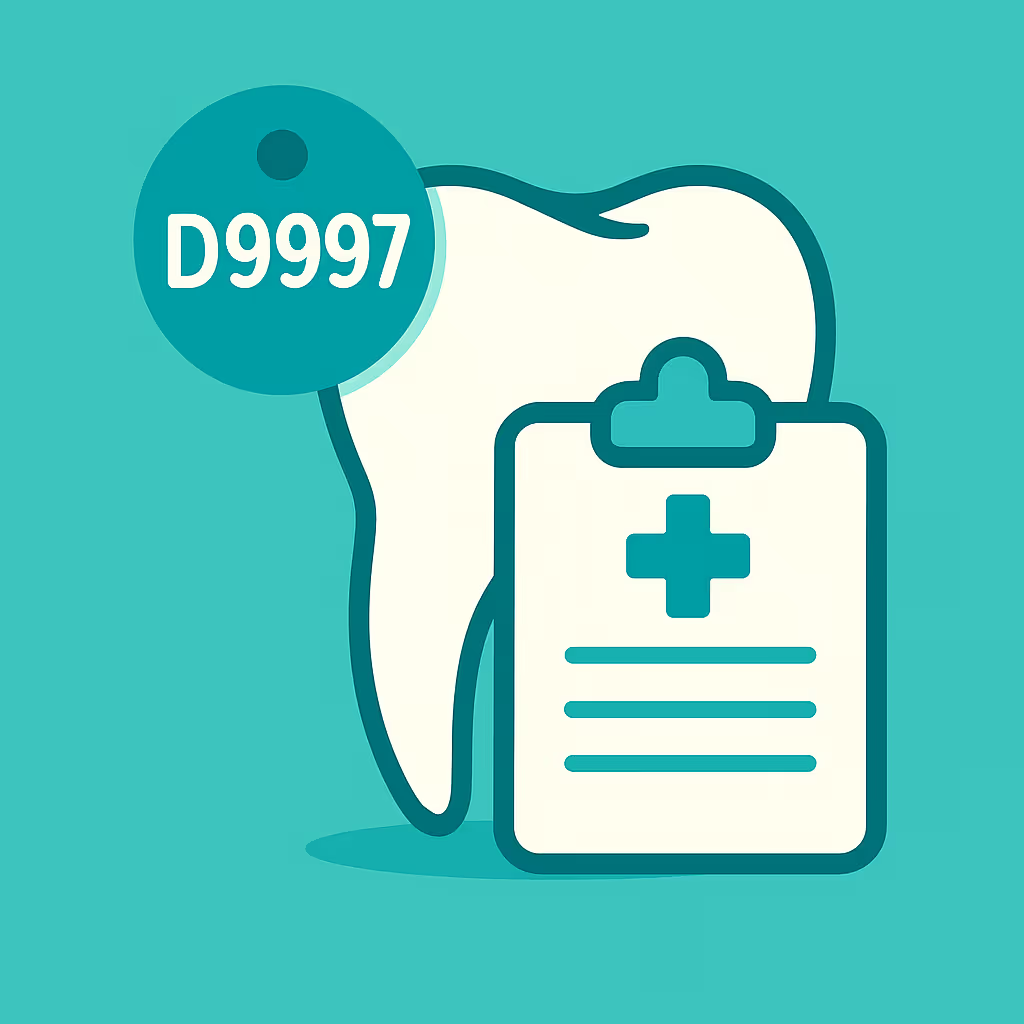Understanding Dental Code D6099
When to Use D6099 dental code
The D6099 dental code is designated for an "unspecified implant-supported retainer for fixed prosthesis (FPD)." Dental practices should use D6099 when a patient requires an implant-supported retainer for a fixed partial denture, but the specific clinical situation does not fit the descriptions of other, more specific CDT codes. This code acts as a catch-all for unique or complex cases that fall outside standard categories, ensuring that dental offices can still bill accurately for their work.
Common scenarios include custom abutments, non-standard retainer designs, or situations where the prosthetic solution is not described by codes such as D6056 (prefabricated abutment) or D6065 (implant-supported porcelain/ceramic crown). Always verify that no other CDT code more precisely describes the service before selecting D6099.
Documentation and Clinical Scenarios
Proper documentation is essential when using D6099. Since it is an "unspecified" code, insurance carriers will require detailed clinical notes and supporting documentation to process the claim. Best practices include:
- Detailed Narrative: Clearly explain why a standard code does not apply and describe the clinical situation and prosthetic solution provided.
- Supporting Images: Attach radiographs, intraoral photos, and laboratory prescriptions to illustrate the complexity or uniqueness of the case.
- Material and Technique: Specify the materials used and any special techniques or components involved.
Typical clinical scenarios for D6099 include custom-milled implant retainers, non-standard connector designs, or hybrid prosthetic solutions that do not fit standard definitions. Always ensure your documentation justifies the use of an unspecified code to reduce the risk of claim denial.
Insurance Billing Tips
Billing with D6099 requires extra attention to detail. Here are actionable steps to maximize claim acceptance:
- Pre-authorization: Whenever possible, submit a pre-authorization with a comprehensive narrative and supporting documentation to the insurance carrier before treatment.
- Claim Submission: On the claim form, include a detailed description in the remarks section. Attach all supporting documents and reference the denial or inapplicability of other codes if relevant.
- EOB Review: Carefully review the Explanation of Benefits (EOB) for denial reasons. If denied, use the provided rationale to craft a targeted appeal with additional documentation.
- Appeals Process: If the claim is denied, submit a timely appeal with a revised narrative, additional clinical evidence, and a letter from the treating dentist explaining the necessity of the service.
Consistent communication with insurance representatives and thorough documentation are key to successful reimbursement for D6099 claims.
Example Case for D6099
Consider a patient who presents with a unique edentulous span requiring a custom-milled titanium retainer for an implant-supported fixed partial denture. Standard abutment or retainer codes do not accurately describe the custom solution fabricated for this patient. The dental team documents the clinical rationale, includes pre- and post-op radiographs, and submits a detailed narrative with the claim. The insurance carrier initially requests additional information, but after a prompt and thorough response—including lab invoices and a letter of medical necessity—the claim is approved and paid at the appropriate rate.
This example highlights the importance of using D6099 only when justified, and demonstrates how robust documentation and proactive communication can lead to successful claim outcomes.





